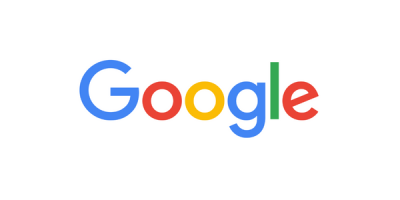Google Targeting Solutions

Linked, Unlinked
Audience, Clean rooms, Contextual, Seller defined audiences
Audio, CTV, Desktop web, DOOH, In-game, Mobile app, Mobile web
Targeting solutions
DV360 - PAIR - Publisher Advertiser Identity Reconciliation
Publisher Advertiser Identity Reconciliation, or PAIR, is a new solution that gives publishers and advertisers the option to securely and privately reconcile their first-party data for audiences who have visited both an advertiser’s and a publisher’s site. Through PAIR, advertisers and publishers can leverage the direct relationships with their users to bring them highly relevant ads while ensuring their data remains secure and private via advanced data encryption methods without the reliance of third party cookies. They will also maintain ownership and full control of the data they share; data is encrypted and PAIR doesn’t pool audience data.
PAIR is not a replacement for third party cookies and is built to respect privacy expectations and does not allow for tracking people across the web. It is designed for use with all types of inventory.
Google Ad Manager - Publisher Provided IDs (PPID)
The Publisher provided identifier (PPID) allows publishers to send Google Ad Manager an identifier for use in frequency capping, audience segmentation and audience targeting, sequential ad rotation, and other audience-based ad delivery controls across devices. Passing PPID can be particularly beneficial in cases where the publisher has a consistent identifier across different devices (i.e. signed in traffic) or for environments where third-party cookies are not available such as web browsers currently restricting the use of third-party cookies (e.g. Safari, Firefox) , server-side implementations and Connected TV environments.
Google Ad Manager - Publisher Provided Signals
Publisher Provided Signals (PPS) is a new feature, currently in beta, to help increase programmatic monetisation. It aims to unlock the use of publishers’ first-party audience and contextual data, helping publishers scale their first-party data to improve programmatic monetisation. With PPS publishers can categorise their first-party data into consistent audience or contextual segments and then share these signals with programmatic buyers. These signals make it easier for programmatic buyers to find and purchase audiences based on things like demographics, content interests or purchase intent across multiple sites and apps without tracking people’s activity in apps or across the web.
We are integrating the IAB Tech Lab’s Seller Defined Audiences into this solution. Publishers can use the IAB’s Audience Taxonomy and Content Taxonomy to share signals with Google Ads and Display & Video 360.
Google Ad Manager - Secure Signals
Publishers can share secure signals on RTB requests with the third-party bidders they choose. These signals can be created through a signal collection script or adapter provided by a bidder or third party that the publisher chooses to work with.
The publisher is ultimately responsible for what information their chosen signals contain. The signals must be obfuscated before sending them to Google. Secure signals will only be shared at the publisher’s explicit instruction and only with bidders the publisher has allowed to receive the signals. At no point will information contained in the signals be visible or readable by Google or its platforms.
Google Ad Manager - Technical Ad Delivery/Limited Ads
Technical ad delivery gives IAB TCF publishers the ability to serve a reservation ad in the absence of consent or legitimate interest for standard TCF purposes.
Google’s Technical ad delivery solution relies on IAB TCF Special Purpose 2, which allows the use of a user’s IP address to deliver an ad creative to a device. Notably, under IAB TCF Special Purpose 2, vendors cannot “conduct any other data processing operation allowed under a different purpose under this purpose”. As such, with Technical ads, targeting and measurement are necessarily restricted.
Google Ads - Customer Match
An audience solution that matches Google users against the marketer’s own first-party data, helping them to reach their customers across Search, Gmail, Shopping, YouTube, and Discovery campaigns.
Customer Match relies on first-party data that the customer owns. Customers can upload their consented first-party user data, which is hashed to protect data privacy. Customer Match data also informs modelling and automated campaigns (e.g. Performance Max). Leveraging first-party data to reach existing customers and finding new ones on Google’s owned and operated properties is key to achieving sustainable long-term growth.
Google Ads - Optimised Targeting
Reach new and relevant audiences across Google display campaigns, Discovery, and YouTube Video Action with ease, powered by our privacy forward machine learning models. Optimised targeting builds off of existing targeting inputs – such as the campaign’s core audiences or your own first-party data – to find new, high-performing Google audiences for you.
Optimised targeting ensures advertisers are prepared for a world with limited third-party cookies and identifiers. It is an effective strategy to mitigate iOS14 targeting impact that no longer allows remarketing and customer match data, cookie loss, and additional technology changes.